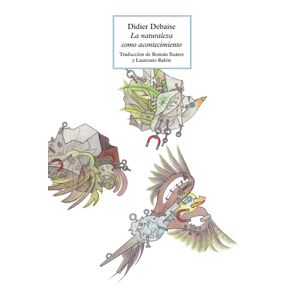| Selo | Coastal Tides Press |
|---|---|
| Edição | 0 |
| Idioma | Inglês |
| Autores | David Earl Young |
| Acabamento | Capa Dura |
| Quantidade de Páginas | 208 |
| Origem | Literatura Estrangeira |
 Outlines of Logic; an English Translation of Trendelenburgs Elementa Logices Aristoteleae
Outlines of Logic; an English Translation of Trendelenburgs Elementa Logices Aristoteleae
Legare Street Press
R$ 105,13 ou até 2x sem juros Philosophie des Unbewussten
Philosophie des Unbewussten
Legare Street Press
R$ 335,85 ou até 3x sem juros Focus on What Matters
Focus on What Matters
North Eagle Publishing
R$ 117,53 ou até 2x sem juros Thoughts on Life and Religion
Thoughts on Life and Religion
Legare Street Press
R$ 169,57 ou até 3x sem juros Justice Interruptus
Justice Interruptus
Taylor & Francis Ltd
R$ 564,95 ou até 3x sem juros Think Straight
Think Straight
Rowman & Littlefield Publishing Group Inc
R$ 161,97 ou até 3x sem juros REALITY (New 2020 Edition)
REALITY (New 2020 Edition)
Peter Kingsley
R$ 281,82 ou até 3x sem juros Self-Reliance, Nature, and Other Essays (Royal Collectors Edition) (Case Laminate Hardcover with Jacket)
Self-Reliance, Nature, and Other Essays (Royal Collectors Edition) (Case Laminate Hardcover with Jacket)
Engage Books
R$ 304,73 ou até 3x sem juros Short Works
Short Works
Parmenides Traditional Philosophy Foundation
R$ 144,81 ou até 2x sem juros The Awakening of the Soul
The Awakening of the Soul
Alpha Editions
R$ 86,80 à vista Aristotles Syllogistic Underlying Logic. His Model with his Proofs of Soundness and Completeness
Aristotles Syllogistic Underlying Logic. His Model with his Proofs of Soundness and Completeness
College Publications
R$ 177,95 ou até 3x sem juros Bushido, the Soul of Japan
Bushido, the Soul of Japan
Alpha Editions
R$ 100,30 ou até 2x sem juros O LIVRO DO MAAT
O LIVRO DO MAAT
Lulu Press
R$ 390,09 ou até 3x sem juros Materialism, Minds, and Cartesian Dualism
Materialism, Minds, and Cartesian Dualism
Rowman & Littlefield Publishing Group Inc
R$ 299,65 ou até 3x sem juros Proto-Phenomenology, Language Acquisition, Orality and Literacy
Proto-Phenomenology, Language Acquisition, Orality and Literacy
Rowman & Littlefield Publishing Group Inc
R$ 346,36 ou até 3x sem juros A filosofia como atividade em Wittgenstein
A filosofia como atividade em Wittgenstein
KS OmniScriptum Publishing
R$ 359,28 ou até 3x sem juros The Seven Generations and The Seven Grandfather Teachings
The Seven Generations and The Seven Grandfather Teachings
James Vukelich
R$ 112,85 ou até 2x sem juros Mad Men and Philosophy
Mad Men and Philosophy
John Wiley & Sons
R$ 142,00 ou até 2x sem juros Friedrich Wilhelm Joseph von Schellings Sämmtliche Werke
Friedrich Wilhelm Joseph von Schellings Sämmtliche Werke
Legare Street Press
R$ 258,42 ou até 3x sem juros The Philosophy of Loyalty
The Philosophy of Loyalty
Legare Street Press
R$ 200,40 ou até 3x sem juros Focus on What Matters
Focus on What Matters
North Eagle Publishing
R$ 117,53 ou até 2x sem juros Africa for Africans
Africa for Africans
Mint Editions
R$ 189,05 ou até 3x sem juros REALITY (New 2020 Edition)
REALITY (New 2020 Edition)
Peter Kingsley
R$ 281,82 ou até 3x sem juros Letters from a Stoic (Complete) (Royal Collectors Edition) (Case Laminate Hardcover with Jacket)
Letters from a Stoic (Complete) (Royal Collectors Edition) (Case Laminate Hardcover with Jacket)
Engage Books
R$ 389,13 ou até 3x sem juros The New Bhagavad-Gita
The New Bhagavad-Gita
Author Reputation Press, LLC
R$ 141,15 ou até 2x sem juros Vedic Philosophy of the Kali Yuga
Vedic Philosophy of the Kali Yuga
Draft2Digital
R$ 110,51 ou até 2x sem juros Bushido, the Soul of Japan
Bushido, the Soul of Japan
Alpha Editions
R$ 100,30 ou até 2x sem juros Buddhism and Buddhists in China
Buddhism and Buddhists in China
Alpha Editions
R$ 93,77 à vista Vivekachudamani - The Crest-Jewel of Discrimination
Vivekachudamani - The Crest-Jewel of Discrimination
Evertype
R$ 129,76 ou até 2x sem juros Character
Character
Cosimo
R$ 56,45 à vista Aristotle On Fallacies
Aristotle On Fallacies
Legare Street Press
R$ 247,03 ou até 3x sem juros Thoughts on Life and Religion
Thoughts on Life and Religion
Legare Street Press
R$ 169,57 ou até 3x sem juros Think Straight
Think Straight
Rowman & Littlefield Publishing Group Inc
R$ 161,97 ou até 3x sem juros The Essential Henry David Thoreau Collection
The Essential Henry David Thoreau Collection
Filibooks ApS
R$ 159,20 ou até 3x sem juros Cities and Thrones and Powers
Cities and Thrones and Powers
Angelico Press Ltd
R$ 196,15 ou até 3x sem juros Ethnophilosophy and the Search for the Wellspring of African Philosophy
Ethnophilosophy and the Search for the Wellspring of African Philosophy
Springer Nature B.V.
R$ 337,20 ou até 3x sem juros REALITY (New 2020 Edition)
REALITY (New 2020 Edition)
Peter Kingsley
R$ 281,82 ou até 3x sem juros Short Works
Short Works
Parmenides Traditional Philosophy Foundation
R$ 144,81 ou até 2x sem juros The Awakening of the Soul
The Awakening of the Soul
Alpha Editions
R$ 86,80 à vista Aristotles Syllogistic Underlying Logic. His Model with his Proofs of Soundness and Completeness
Aristotles Syllogistic Underlying Logic. His Model with his Proofs of Soundness and Completeness
College Publications
R$ 177,95 ou até 3x sem juros The Distinction Between Saying and Showing
The Distinction Between Saying and Showing
KS OmniScriptum Publishing
R$ 879,89 ou até 3x sem juros Vivekachudamani - The Crest-Jewel of Discrimination
Vivekachudamani - The Crest-Jewel of Discrimination
Evertype
R$ 129,76 ou até 2x sem juros Character
Character
Cosimo
R$ 56,45 à vista Transitioning to Adulthood with Autism
Transitioning to Adulthood with Autism
Springer Nature B.V.
R$ 650,23 ou até 3x sem juros La naturaleza como acontecimiento
La naturaleza como acontecimiento
Open Humanities Press CIC
R$ 169,37 ou até 3x sem juros